The grand history of paleontology puts quite a bit of emphasis on Iguanodon. As a child, I could never understand why people failed to recognize this dinosaur, especially when all the books lavished it with so much attention. It was almost as though they weren’t reading the books at all. Possibly the most attention Iguanodon has ever received was in Disney’s 2000 film “Dinosaur.” One of the major artists working on this film was David Krentz, who would later design this little Tenontosaurus for his 1:72 scale Antediluvian Collection of resin models.
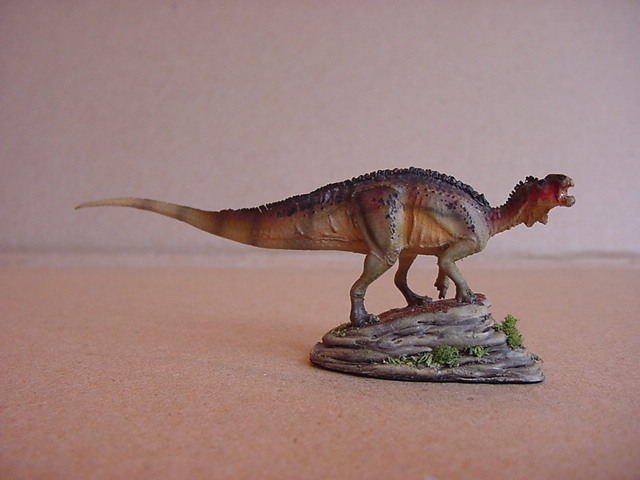
Small coincidence then, that this iguanodontid bears such a close resemblance to the protagonist of the Disney film. Some differences are obvious, of course. This is a realistic reconstruction rather than a puppy-eyed Disney character, so the head bears quite a bit more menace. The tail of this animal is considerably longer than Iguanodon, just as it should be. Best of all, it’s not carrying a family of anachronistic lemurs on its back.
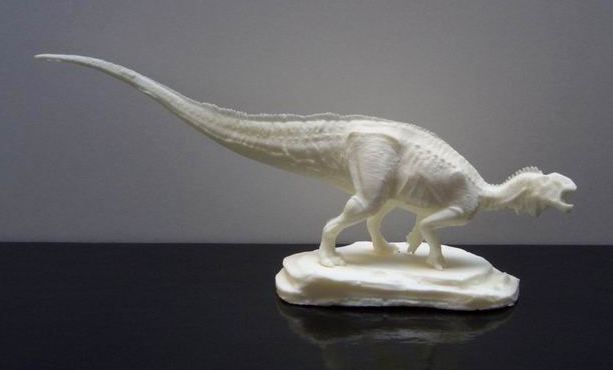
Being pretty obscure compared to Iguanodon, the Tenontosaurus is generally not a popular sight on the mass-produced figure market. The only exception I know is the CollectA Tenontosaurus of 2009, which was one of the manufacturer’s best efforts at the time. That reign was short lived however, as David released this model just one year after the CollectA version. Several sculptors have created Iguanodon models since that time, but it definitely can be argued that this piece gives you the most bang for your buck.
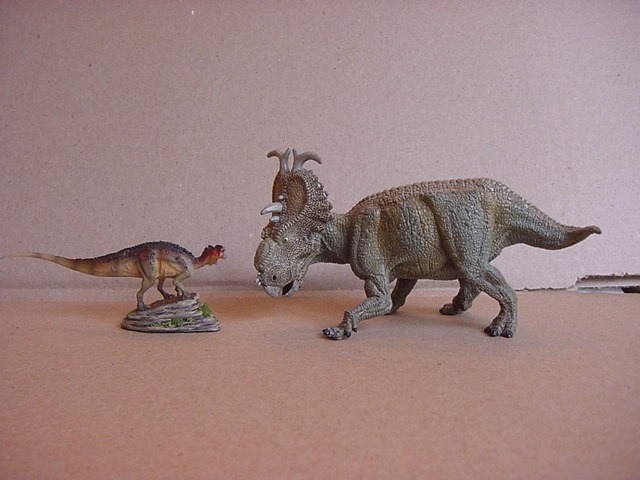
Anyone who has purchased one of David’s Antediluvians probably understands the meaning of “quality over quantity.” Produced at 1:72 scale, this spectacular sculpture is just 4.5 inches long. It was originally crafted digitally in three dimensions, so quite a lot of detail has been packed into its design.
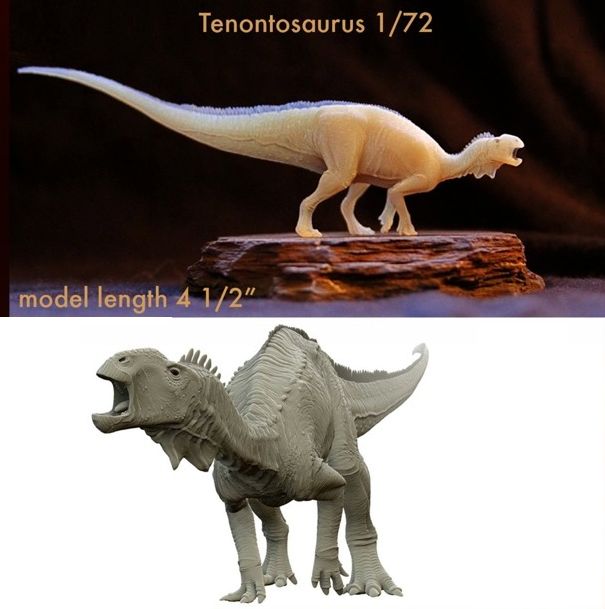
David tends to dress his dinosaurs in all manner of fancy adornments, though rarely does he push the boundaries of paleontological study in doing so. Fossilization of substances like keratin and soft tissue is extraordinarily uncommon, so we often see reconstructions that look very smooth, thin, and plain. Skeletal frameworks do not always reveal the sheer bulk and complexity of the animal’s appearance; just look at any modern animal’s skeleton, which may prove unrecognizable to the untrained eye. Here, we see David’s artistry filling the animal with texture, mass, and life.
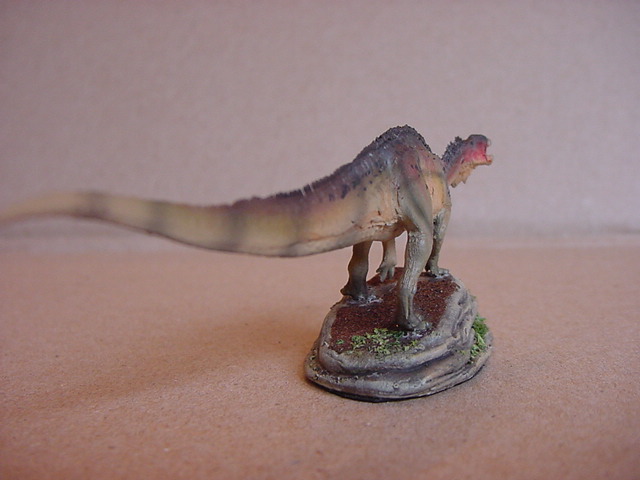
Fine rows of dermal spines line the back, and the dangerously thin tail flourishes beautifully in the air. The bulging of muscles, folding of loose skin, and what appear to be ancient scars provide a more lifelike quality. At the neck is a little wattle, another fleshy feature that one wouldn’t expect to be preserved through the ages. The dressings all contribute to a rather iguana-like appearance, possibly as a clever way of paying homage to the first thoughts people had concerning the discovery of Iguanodon.
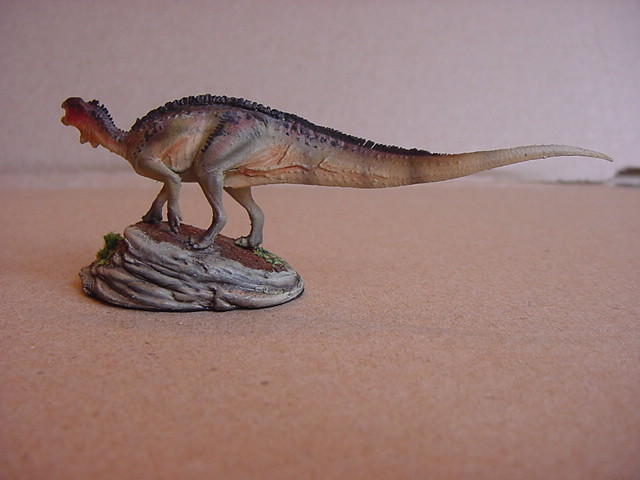
As with most Antediluvians, this model ships with the character and the base. The base is identified on the bottom, with the artist’s name and the species name – this can save a lot of trouble if you buy multiple Antediluvians and get the bases mixed up.
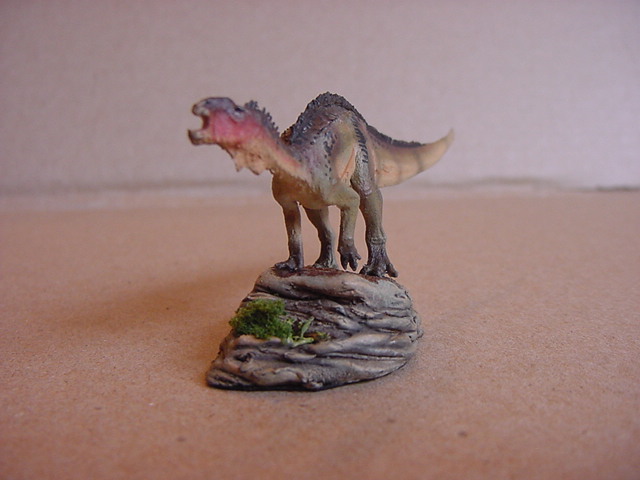
Observant readers will notice the base on this buildup looks quite different from the photo of the unpainted kit. Martin Garratt was responsible for this particular buildup, and his modifications include a larger, sloped base with an arrangement of flora and dirt across the surface. This reinforces the animal’s position within a living, dynamic environment, something that is difficult to convey with a standard figure in an empty vacuum.
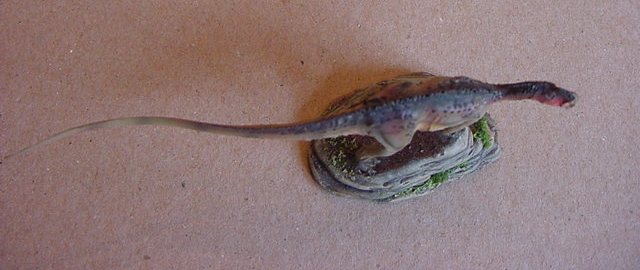
Once painted, it is recommended that you avoid excessive handling of the model. This may hold particular weight for Tenontosaurus, whose long and slender tail might be more prone to snapping if dropped or mishandled.
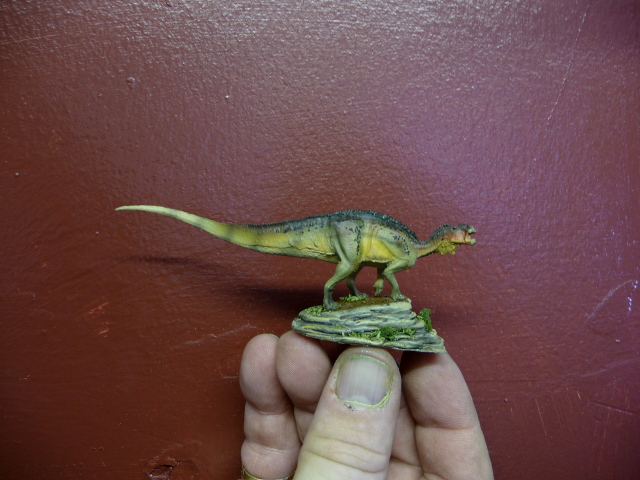
Thanks to the gnawed skeletal remains and nearby Deinonychus fossils, we tend to think of Tenontosaurus as little more than a mobile raptor buffet. Whether you’re watching Jurassic Fight Club or just browsing for artwork on the Internet, that’s typically the role Tenontosaurus is given. One of my favorite features of this model is the highly aggressive posture of the herbivore. His muscles are tensed, his jaw is wide, and he’s clearly not about to take crap from anyone. Granted, you could interpret this posture however you like. That is one of the joys the resin medium, after all.
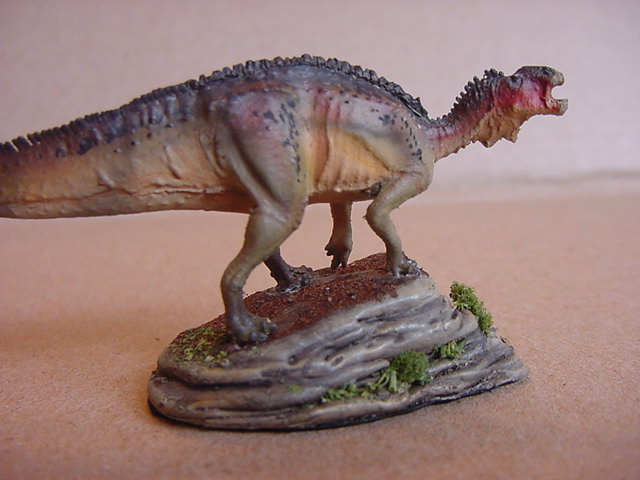
Disclaimer: links to Ebay and Amazon on the DinoToyBlog are affiliate links, so we make a small commission if you use them. Thanks for supporting us!



Lástima que sea tan pequeña,lo que penaliza un poco la figura.Me parece que está bastante bien hecha.
Kinda looks like Bruton From Disneys Dinosaur, exept with less mucle